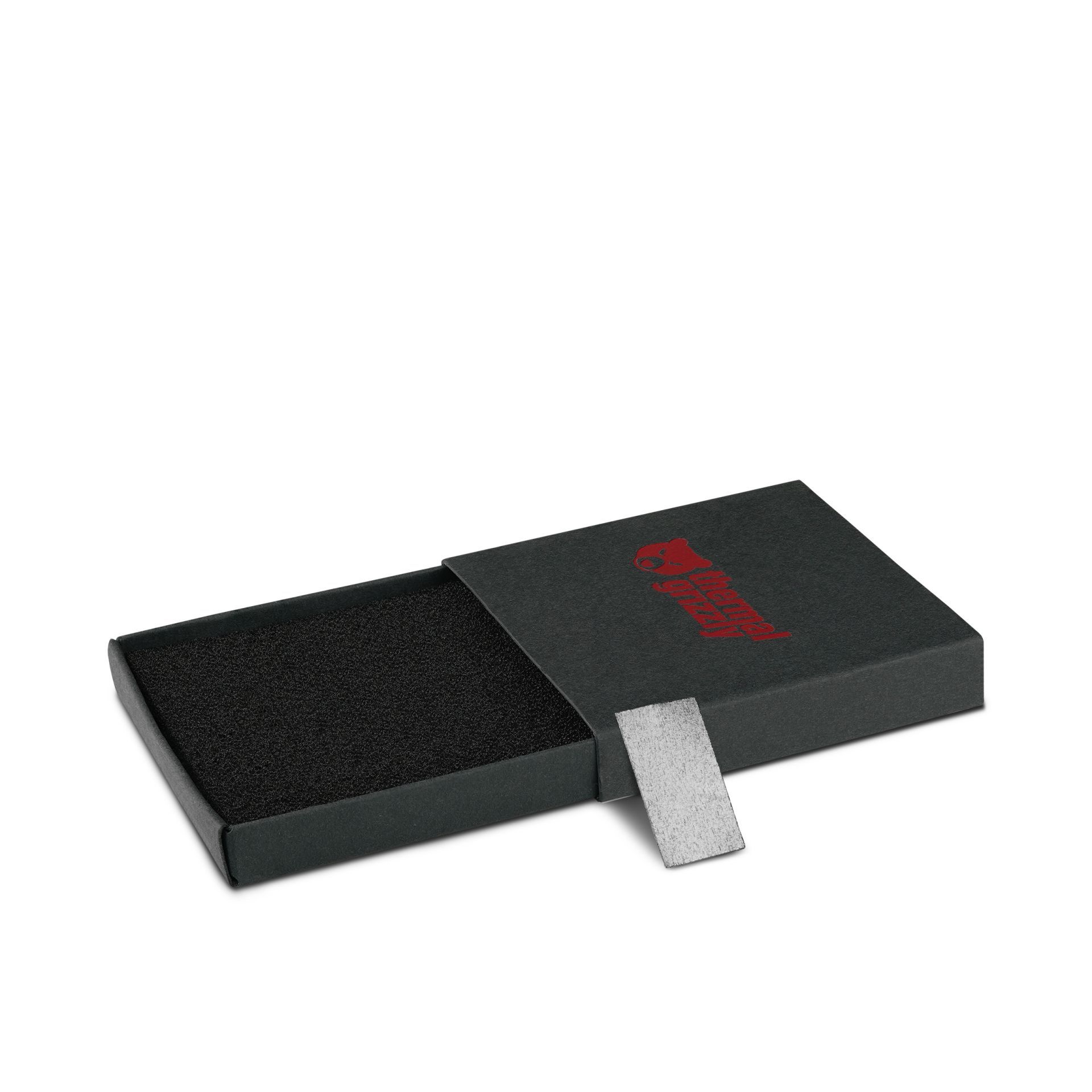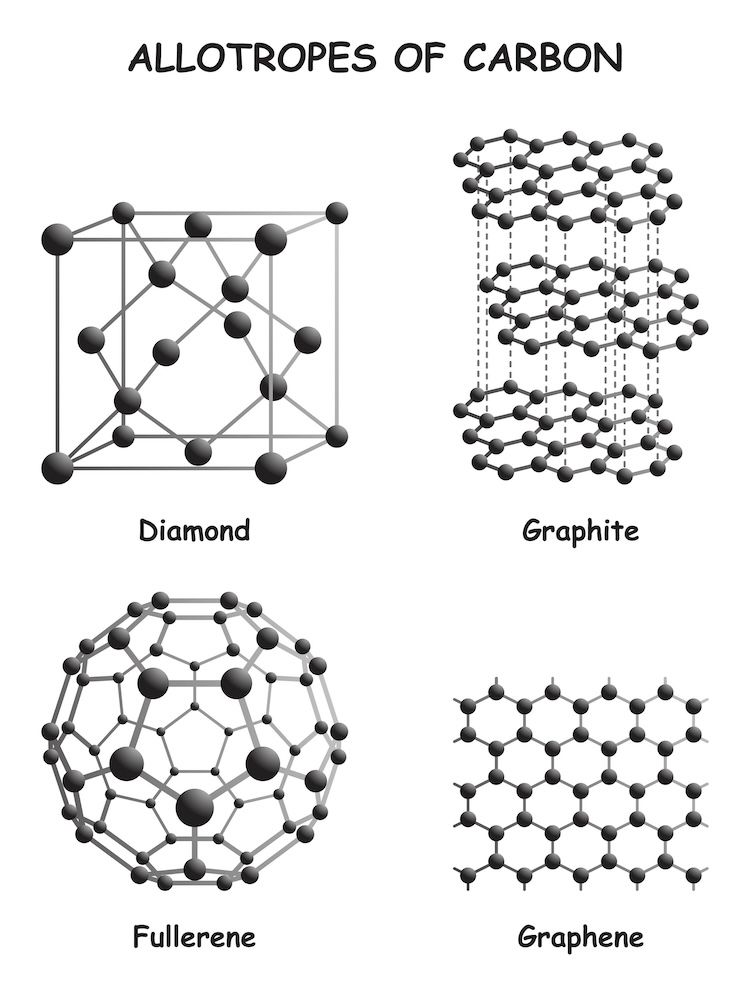Key Takeaways
- Graphene thermal pads are a Thermal Interface Material (TIM) with excellent thermal conductivity that can potentially outperform traditional thermal paste.
- Graphene thermal pads have excellent performance, but they are also difficult to work with due to their electrical conductivity, and they tear easily.
- Graphene pads are reusable, don’t dry out, and are easier to work with than liquid metal, making them a promising alternative for PC cooling.
There’s nothing wrong with traditional thermal compounds. They’re cheap, reliable, and can keep your computer parts decently cool. Still, if you’re looking for a more permanent solution with excellent performance, start looking at graphene thermal pads.
What Are Graphene Thermal Pads?
Graphene thermal pads are a type of Thermal Interface Material (TIM) that you can use as an alternative to traditional thermal paste and liquid metal. Graphene thermal pads are made of graphene, which is an allotrope of carbon. It’s essentially a single sheet of carbon atoms in a hexagonal lattice structure that is only one atom thick. Like any other TIM, a graphene thermal pad’s job is ensuring maximum thermal contact between a hot component, such as a CPU, and a heatsink.
What makes graphene pads so exciting is their excellent thermal conductivity. For instance, TG-P100 graphene has a horizontal thermal conductivity of 1500–1800W/mK (watts per meter Kelvin) and a vertical conductivity of 12W/mK. In the case of computers, we care more about vertical conductivity, as that’s the direction heat travels from a component to a heatsink. Even so, it’s higher than a traditional non-metallic thermal paste’s thermal conductivity of about 4–10W/mK. In fact, graphene has potentially unlimited thermal conductivity, as its conductivity scales with size. As the technology develops, we might see pads that outperform liquid metal a few years from now.
Graphene Thermal Pads vs. Traditional Thermal Paste
We’ve now established that graphene has excellent thermal conductivity, but how does it perform in real-world scenarios? TechPowerUp put the Thermal Grizzly KryoSheet up against high-end thermal paste, including the Thermal Grizzly Kryonaut. They used an RX 7900 XTX and found that the KryoSheet outperformed traditional thermal paste at maximum loads by about 3–5°C.
The main benefits of graphene thermal pads are that they’re reusable, can’t dry out over time, and are easier to work with than liquid metal. However, easier than liquid metal doesn’t exactly mean easy. The main issue is that graphene is electrically conductive, so it might cause a short circuit and kill your PC if it’s not installed correctly. It doesn’t help the fact that graphene pads are incredibly delicate and hard to handle. If you order a KryoSheet, make sure you have a clean set of precision tweezers!
Graphene and Graphite/Carbon Thermal Pads Are Not the Same
When shopping for high-end thermal pads, you’ll come across carbon, graphene, and graphite. Let’s use chemistry to better understand these materials. Carbon is a chemical element with the symbol C and atomic number 6. Graphene is a sheet of carbon atoms that’s only one atom thick. Graphite is a bunch of layers of graphene stacked on top of each other. So, the term “carbon thermal pad” can technically refer to any use of carbon in the material. This includes allotropes of carbon, such as graphite and graphene, as well as carbon-based polymers like the Thermal Grizzly Carbonaut.
Thermal Grizzly explains in its product details for the KryoSheet Graphene Pad that it created graphene pads by breaking up layers of graphite along the basal plane. By exposing each layer of graphene directly to the surface, we get an exceptional thermally- and electrically-conductive material. In a graphite pad, heat has to transfer between each layer of graphene until it reaches a heatsink. But with a graphene pad, heat provides a direct pathway for heat to travel efficiently along its structure. In theory, graphene thermal pads have vastly superior performance compared to graphite pads.
Graphene Pads Could Be the Next Big Thing in PC Cooling
While graphene pads like the KryoSheet are new and expensive commodities for enthusiasts to tinker with, their long-term implications are monumental. Traditional thermal paste needs changing every few years to maintain optimal performance, whereas liquid metal is risky and difficult to work with. A graphene pad can still kill PC components if you’re not careful, as it’s electrically conductive, but it’s still much easier to stick on and not touch for years. Plus, you can reuse it for your next CPU if it’s not worn out and the dimensions match.
Another exciting alternative is phase-change thermal pads, which melt when they come into contact with a hot computer chip. Their application could be especially useful for devices that take time to disassemble, such as laptops and graphics cards, as you’d never have to tear them down to get better cooling performance.
source

